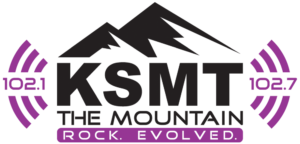While the federal government does its best to do nothing, Summit County voters stepped up this year and passed Ballot Initiative 1A. The initiative, which passed with over 60 percent of the vote, tacks a mill levy on property that will raise $8.8 million a year for the next 10 years. Those funds will go toward five critical areas of need in the county — early childhood care, behavioral health programs, fire mitigation, recycling and public infrastructure.
“We are so grateful to Summit County voters for doing the right thing here,” Family and Intercultural Resources executive director Tamara Drangstveit said after the results came in on election night last month. “We’ve said all along it’s not easy for Summit County’s working families to raise their families here, and this initiative will go a long way to helping them.”
Drangstveit, who was a member of the Yes on 1A campaign, was particularly happy with the $2.5 million per year devoted to affordable early childhood care and learning. The money will go toward a capital fund for an early child care center, as well as a tuition assistance program for 4-year-olds and future programs for younger children. Early child care is particularly expensive because of the lack of providers in the area, as well as a population boom that has created a demand for services the county has not been able to keep up with.
The initiative will also devote $20 million over the next 10 years to behavioral health and suicide prevention. The largest recipient of the funds is Building Hope, a nonprofit created in response to the suicide epidemic in the county that aims to fix holes in the county’s behavioral health system. Betsy Casey, Building Hope’s program manager, said the most important use of the money will be to create “intensive outpatient programs” to help people with chronic behavioral health issues.
“We lack long-term formal mental health treatment up here,” Casey said in the run-up to the election. “Patients with chronic concerns need a continuum of care between the two extremes of acute crisis and treatment and therapy, and it’s monumental if we can create that continuum.”
Recycling and waste diversion, an area that Summit County and the rest of Colorado has struggled to improve on, will receive $1.7 million a year. That money will go toward new improved diversion systems, equipment, facility and capital improvements at the Summit County Resource Allocation Park. One of the biggest projects will be the creation of a new landfill cell at the SCRAP.
Recommended Stories For You
County infrastructure will also receive $16 million over the next 10 years. The Summit County Commons will be receiving a much-needed overhaul and renovation. A new emergency operations center will be installed, while different facilities and buildings on the commons will be moved, redesignated or expanded.
Finally, $10 million will be devoted for the next decade on wildfire mitigation projects around the county. Especially important are new cisterns and fire line projects, especially in areas in and around the Wildernest neighborhood near Silverthorne, as well as fuel break and thinning projects in various neighborhoods all across the county to reduce wildfire risk.
Even though the initiative wound up passing easily, many residents opposed it. One of the main points of contention was why the initiative bundled five separate issues into one question, not giving residents the ability to pick and choose what they wanted to fund. Kim McGahey, Summit County GOP chairman, joined opponents in also decrying what they saw as yet another tax on homeowners that lengthened government’s reach into people’s lives.
Ultimately, a solid majority of voters voted in favor of 1A, showing a continued desire to take care of local problems with local dollars.
